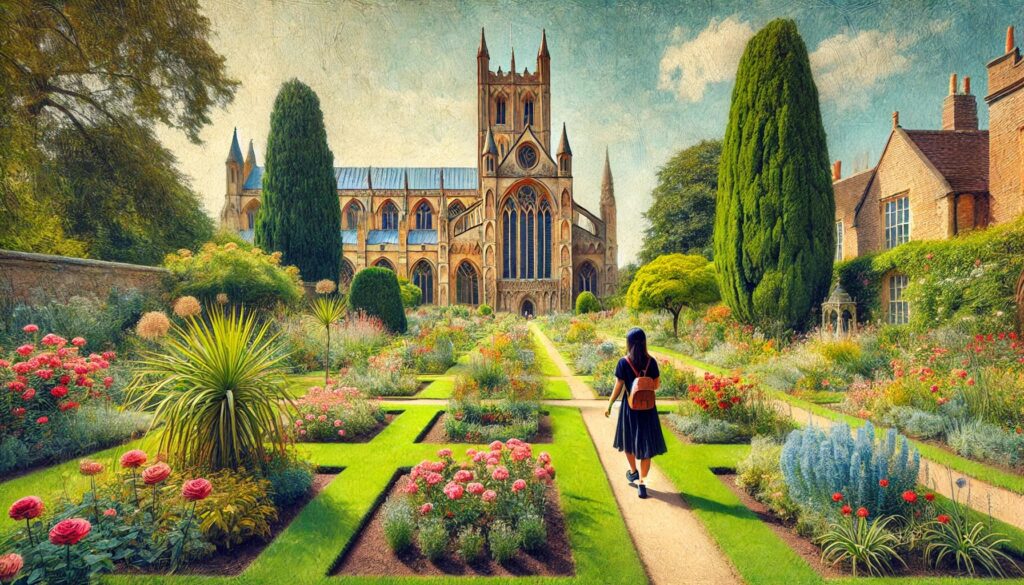ChatGPT:Bury St Edmunds is a historic market town in Suffolk, England. Known for its rich heritage, the town boasts landmarks such as the Bury St Edmunds Abbey ruins, which date back to the medieval period, and the beautiful St Edmundsbury Cathedral. The town’s Abbey Gardens offer scenic parkland for visitors. Bury St Edmunds is also famous for its Greene King brewery, which has been producing beer since the 18th century. The town center features a blend of medieval architecture and modern amenities, with a variety of shops, restaurants, and cultural venues, including the Theatre Royal, one of the oldest working theaters in the UK.
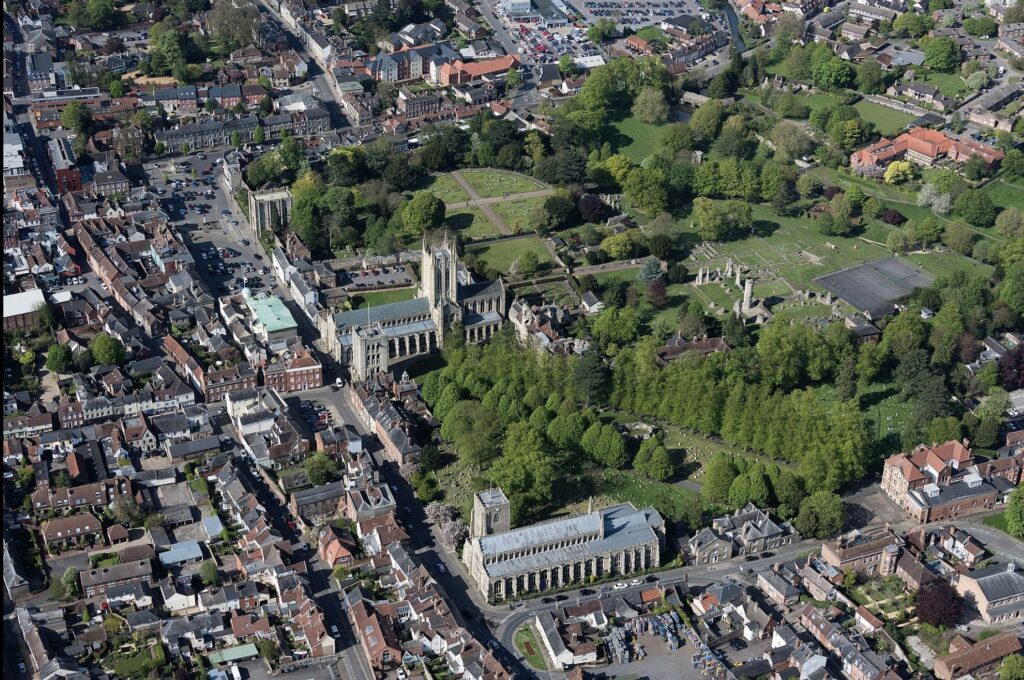
Bury St Edmunds has a rich and storied history dating back to Anglo-Saxon times. The town’s name derives from Saint Edmund, the martyred king of East Anglia, who was killed by the Danes in 869 AD. His remains were buried in the abbey that later became a major pilgrimage site.
The Abbey of Bury St Edmunds was founded in 1020 by King Canute and became one of the wealthiest and most powerful Benedictine monasteries in England. The abbey’s influence grew significantly, and the town developed around it, benefiting from the influx of pilgrims and trade.
In 1214, the town played a pivotal role in English history when a group of barons met at the abbey and swore an oath to compel King John to accept the Magna Carta, which was subsequently sealed in 1215.
Throughout the medieval period, Bury St Edmunds thrived as a market town. The dissolution of the monasteries by Henry VIII in the 16th century led to the abbey’s decline, but the town continued to prosper.
Today, Bury St Edmunds retains its historical charm with numerous preserved medieval buildings, a vibrant town center, and a strong cultural heritage, drawing visitors from around the world.
Benedictine monasteries are characterized by several key features, shaped by the Rule of Saint Benedict, which was written in the 6th century and has guided Benedictine monastic life ever since. The main characteristics include:
- Rule of Life: Benedictine monasteries follow the Rule of Saint Benedict, which emphasizes a balanced life of prayer, work, and study. The rule is structured around the principles of stability, obedience, and conversion of life.
- Ora et Labora: This Latin phrase meaning “pray and work” encapsulates the daily routine of Benedictine monks and nuns. They dedicate themselves to communal and private prayer (the Divine Office), manual labor, and intellectual pursuits.
- Community Life: Monastic life is lived in community, with monks or nuns living together under the leadership of an abbot or abbess. This communal aspect fosters a spirit of brotherhood or sisterhood and mutual support.
- Self-Sufficiency: Benedictine monasteries are often designed to be self-sufficient, with the community engaging in agriculture, crafts, and other forms of manual labor to support themselves. They often produce goods such as bread, cheese, beer, or wine.
- Hospitality: The Rule of Saint Benedict emphasizes the importance of hospitality, instructing monasteries to welcome guests as if they were Christ himself. Many Benedictine monasteries have guesthouses or facilities for retreatants.
- Liturgy and Prayer: Central to Benedictine life is the liturgical prayer, especially the chanting of the Divine Office (Liturgy of the Hours) at regular intervals throughout the day. The Eucharist (Mass) is also a key component of their spiritual life.
- Education and Scholarship: Historically, Benedictine monasteries have been centers of learning and education. Monks copied manuscripts, preserved classical texts, and contributed to theological and philosophical scholarship.
- Stability and Permanence: Monks and nuns take a vow of stability, committing themselves to live their entire lives in the same community. This fosters a deep sense of belonging and continuity.
These characteristics have enabled Benedictine monasteries to become centers of spiritual, cultural, and economic life throughout history, significantly influencing Western monasticism and culture.
Bury St Edmunds boasts a variety of historical monuments and tourist attractions that reflect its rich heritage and cultural significance. Some of the notable sites include:
- Bury St Edmunds Abbey: The ruins of this once-powerful Benedictine abbey, founded in 1020, are set within the beautiful Abbey Gardens. It’s a significant historical and spiritual site.
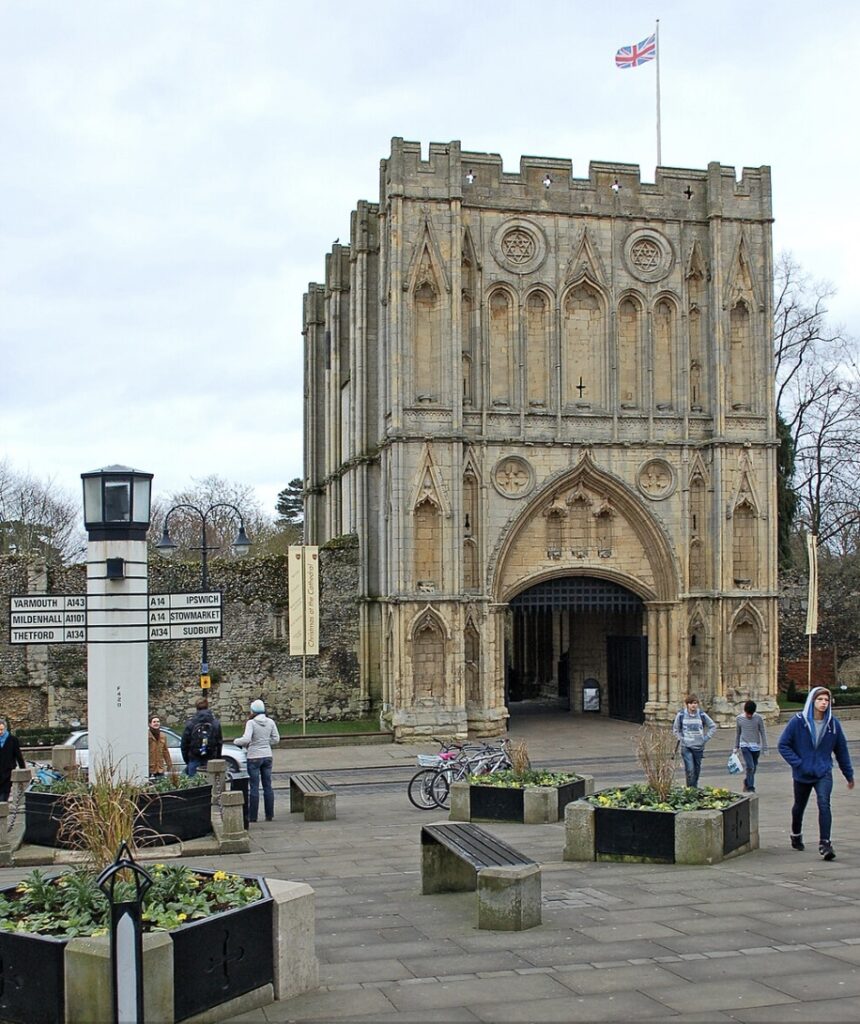
- St Edmundsbury Cathedral: Originally a parish church, it became a cathedral in 1914. Its stunning architecture and recent millennium tower make it a prominent landmark.
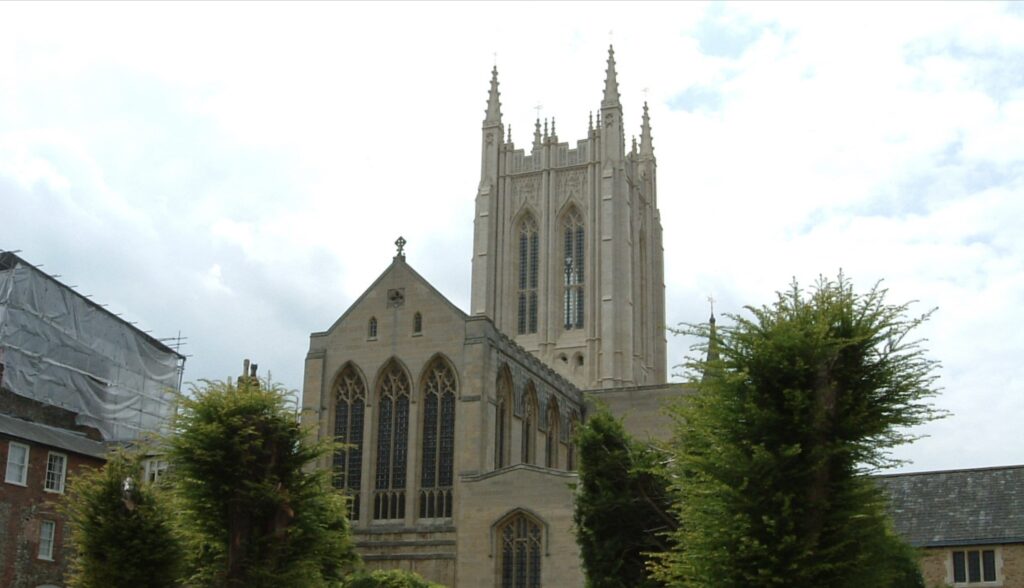
- Abbey Gardens: Adjacent to the abbey ruins, these award-winning gardens feature a mix of formal flowerbeds, a rose garden, and an aviary, providing a peaceful retreat for visitors.
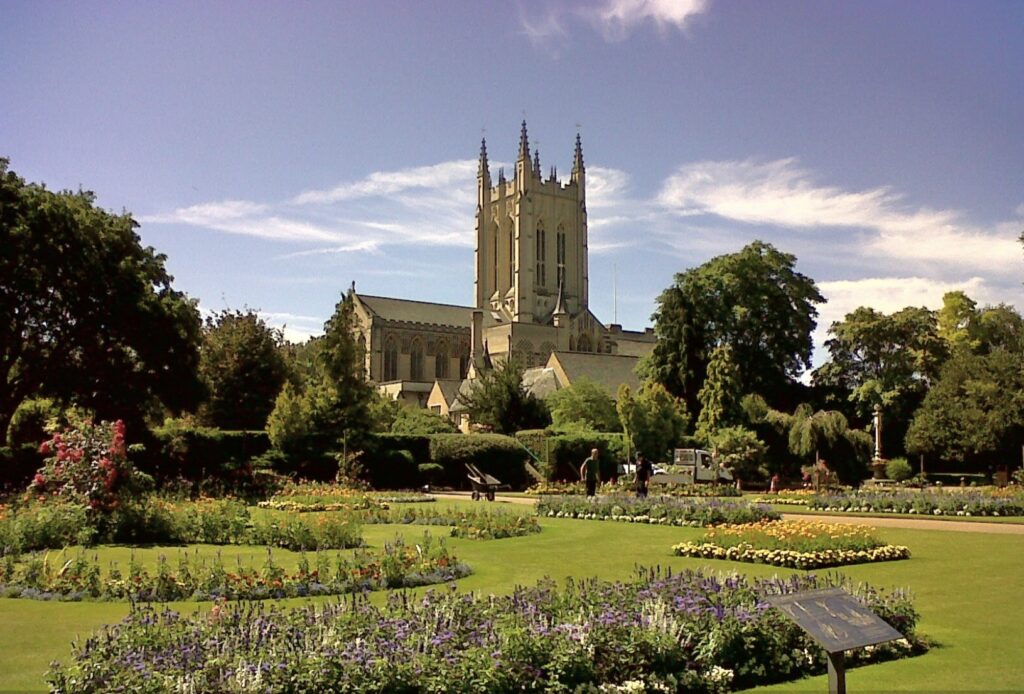
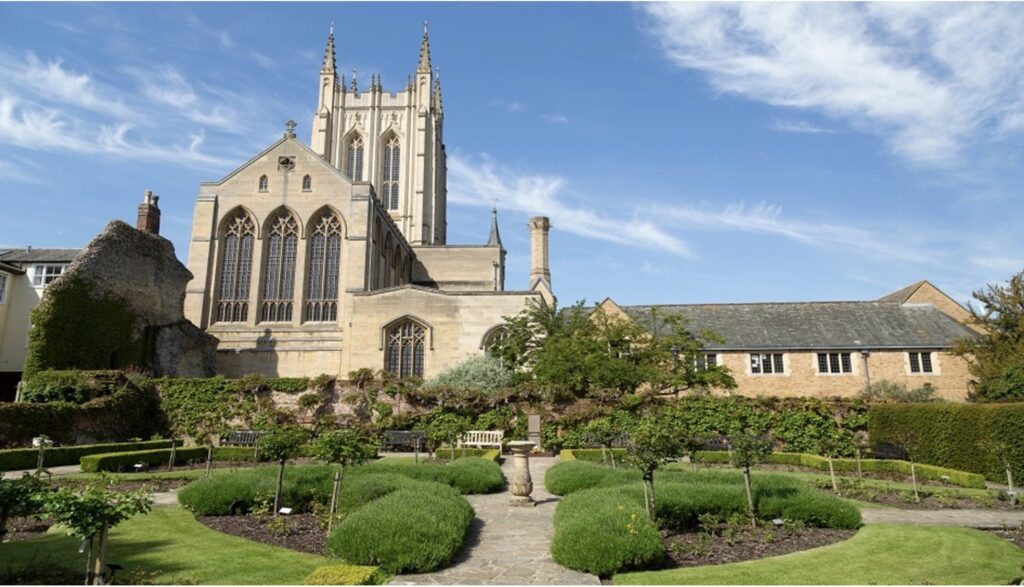
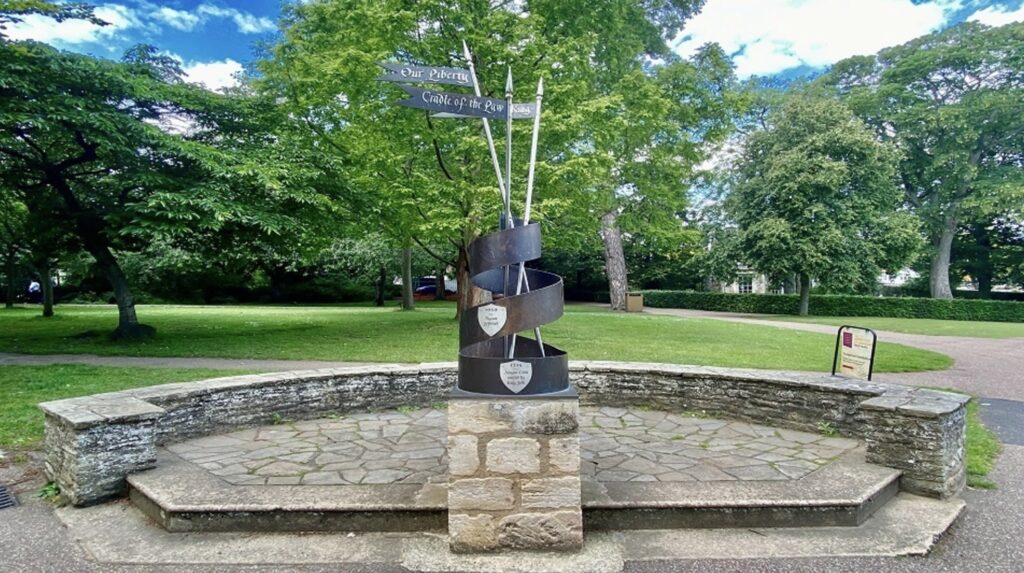
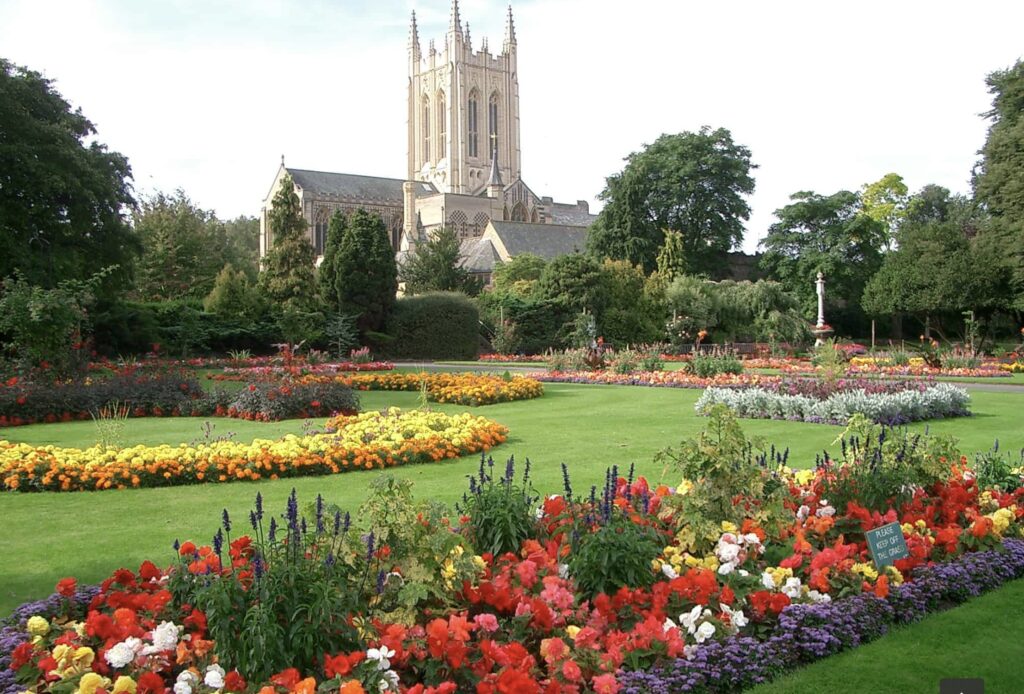
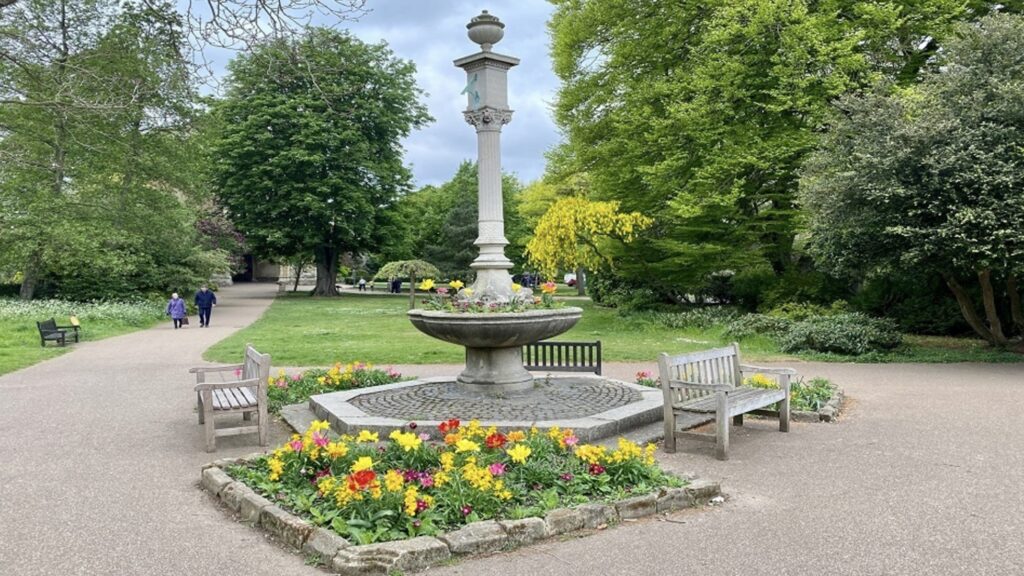
- Theatre Royal: Built in 1819, this is one of the oldest working theaters in the UK. It offers a range of performances and tours, showcasing its Regency-era architecture.
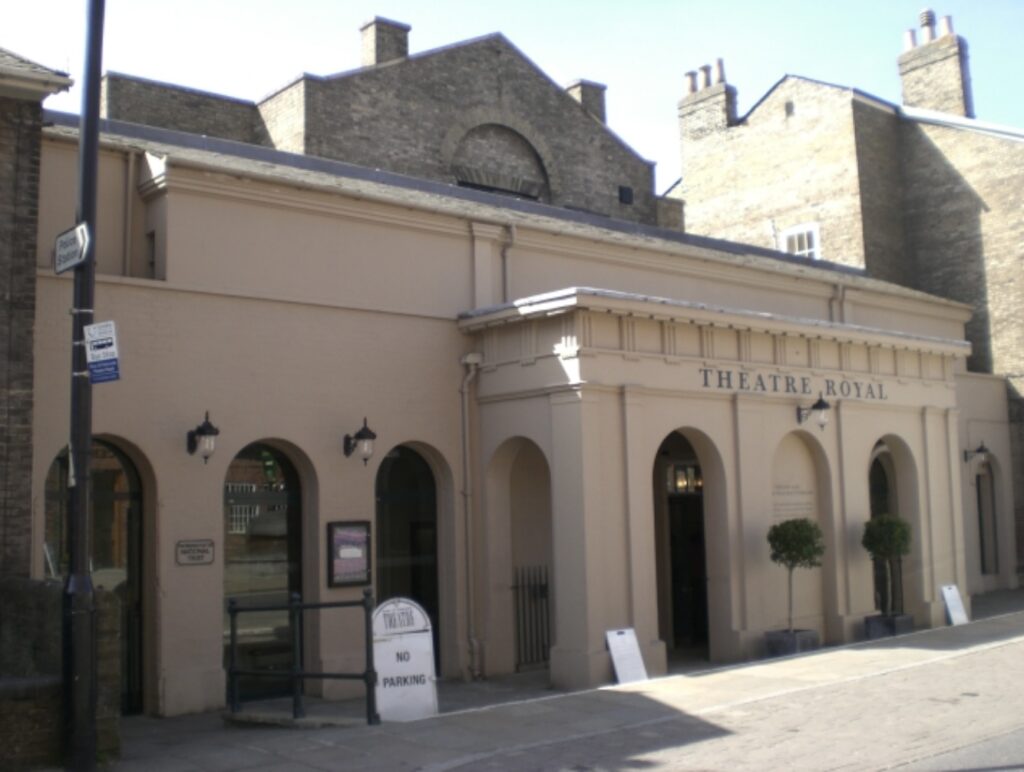
- St Mary’s Church: Known for its impressive size and beautiful interior, St Mary’s Church is one of the largest parish churches in England and features a stunning angel roof.
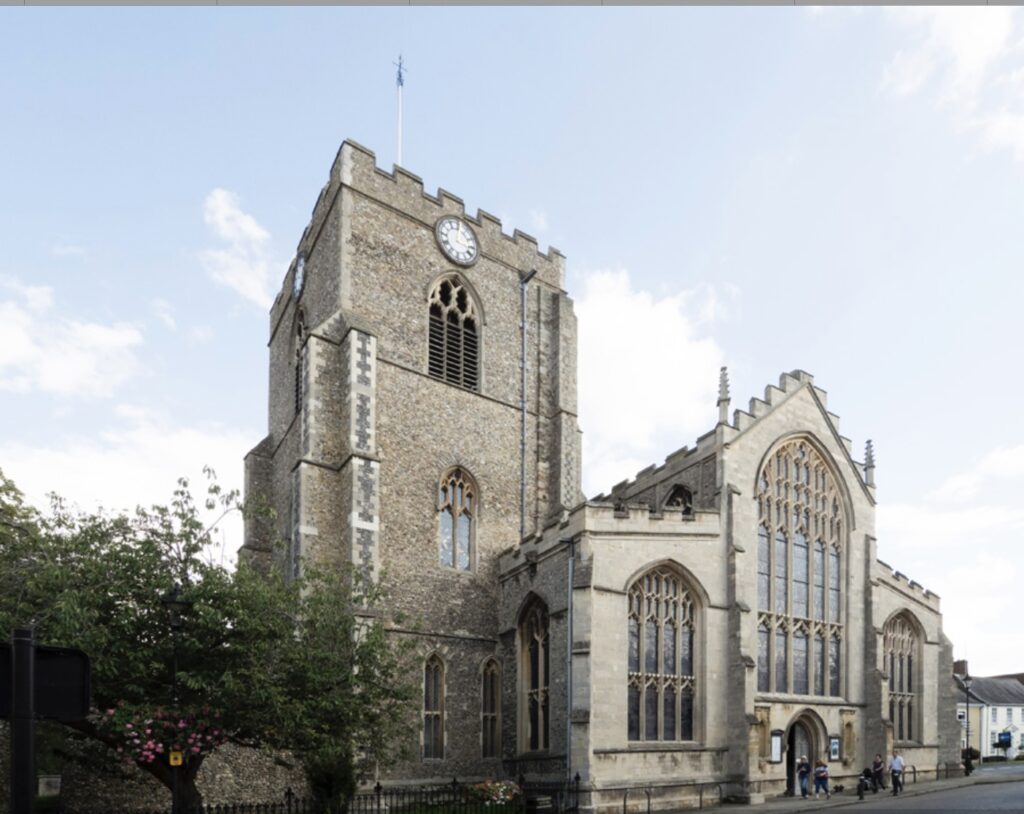
- Greene King Brewery: Established in 1799, this brewery offers tours where visitors can learn about the brewing process and sample some of its famous ales.
- Moyse’s Hall Museum: Housed in a medieval building dating back to 1180, the museum explores the local history of Bury St Edmunds through various exhibits, including archaeology, social history, and fine art.
- The Angel Hotel: A historic coaching inn dating back to the 12th century, famously mentioned in Charles Dickens’ “The Pickwick Papers.” It’s an iconic spot for both accommodation and dining.
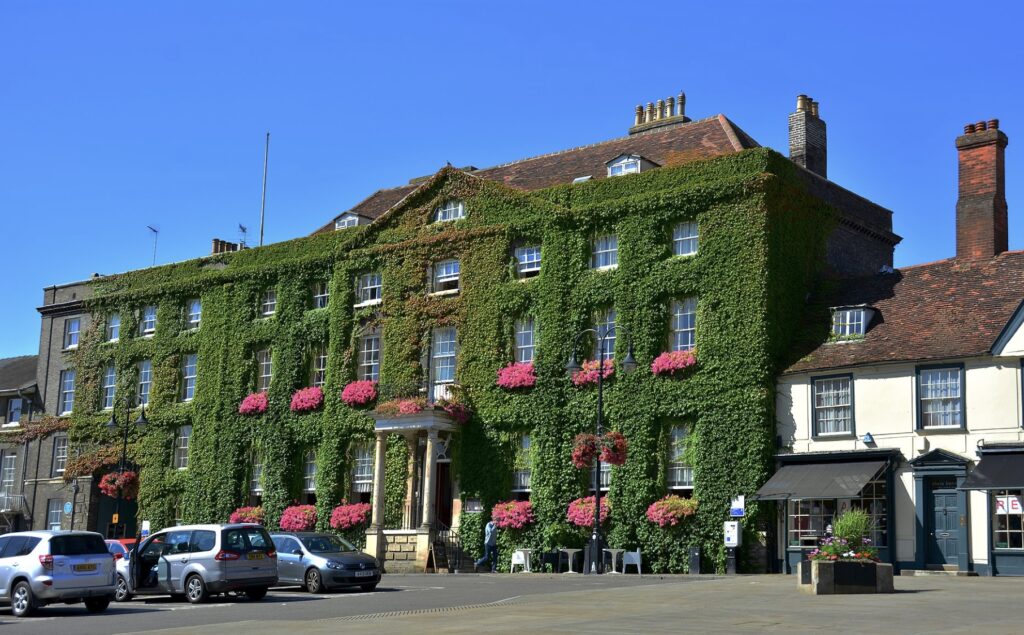
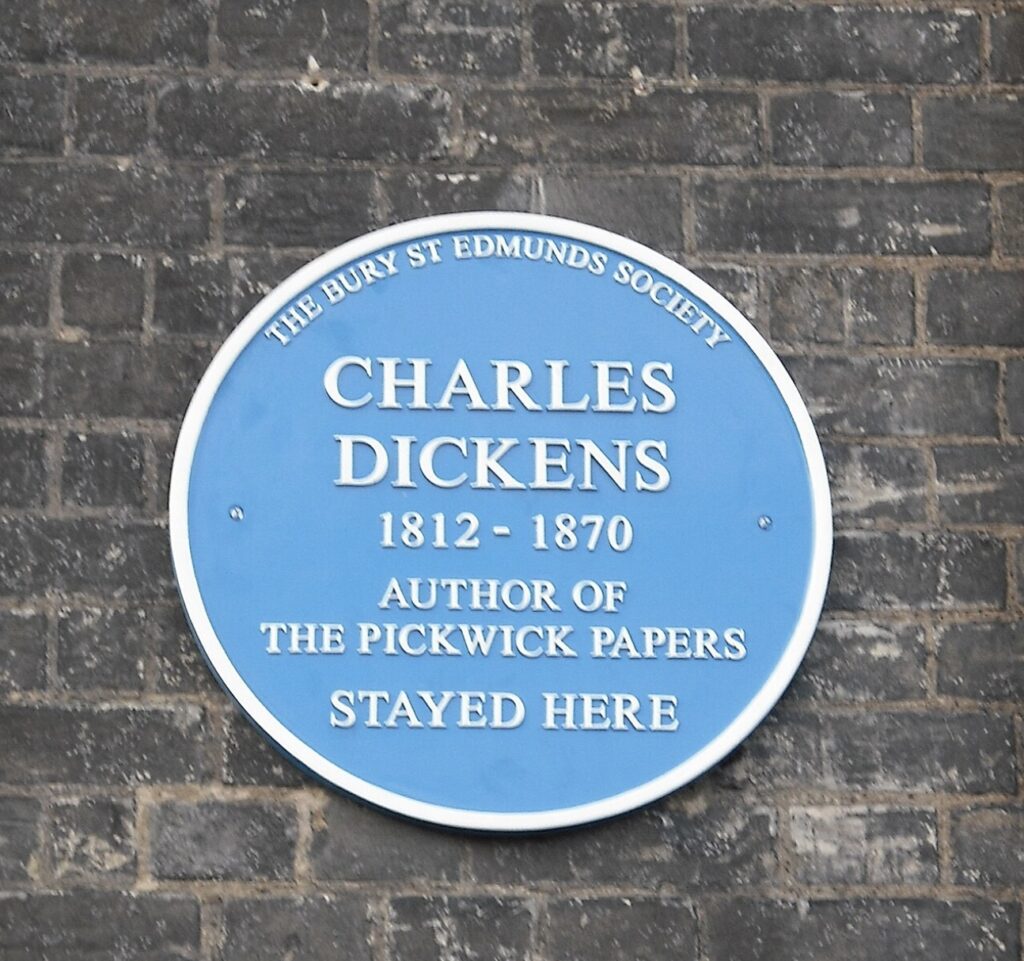
- Ickworth House: A short drive from the town, this National Trust property is a stunning neoclassical mansion set within extensive gardens and parkland, known for its unique rotunda and impressive art collection.
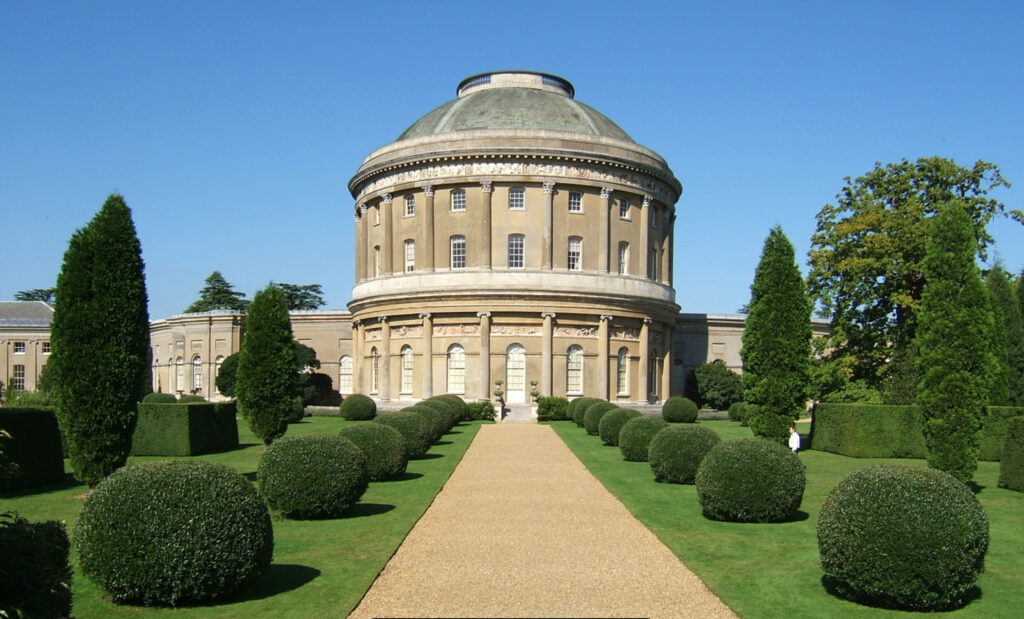
- Abbeygate Street: This historic street is lined with a variety of shops, cafes, and restaurants, offering a charming shopping and dining experience in a historic setting.
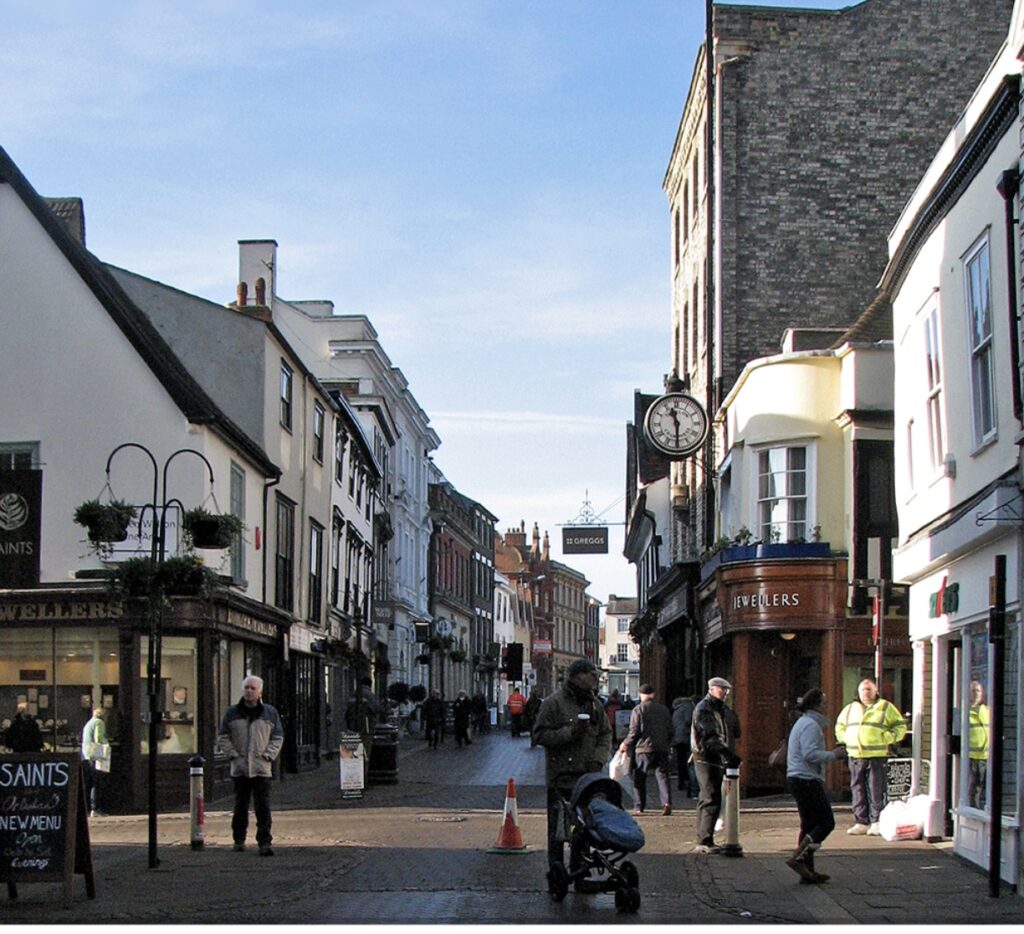
- The Nutshell: Known as one of the smallest pubs in Britain, The Nutshell is a quirky and popular spot for both locals and tourists.
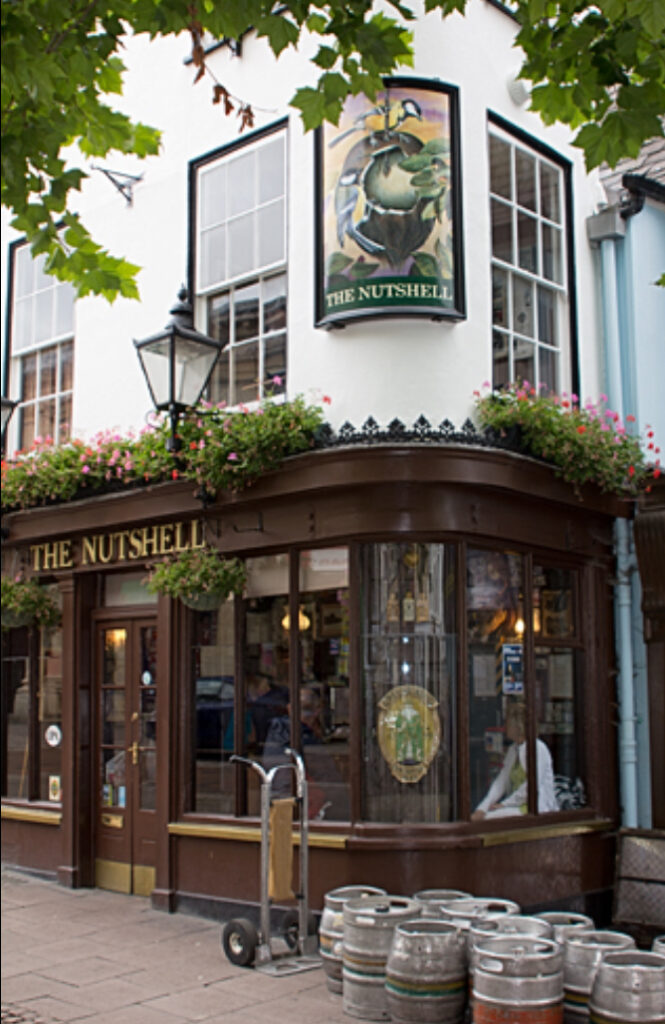
These attractions collectively offer a diverse array of experiences, from exploring historical ruins and grand architecture to enjoying cultural performances and local culinary delights.
History of St Mary’s Church, Bury St Edmunds
St Mary’s Church in Bury St Edmunds is a significant and historic parish church with roots dating back to the 12th century. It is one of the largest parish churches in England and has played a central role in the town’s religious and social life for centuries.
Early History: The original church was built in the 12th century, but much of the current structure dates from the 14th and 15th centuries. The church underwent several phases of construction and expansion, reflecting the town’s growing prosperity and the importance of the church to the local community.
Medieval Period: During the medieval period, St Mary’s was closely associated with the nearby Abbey of Bury St Edmunds, benefiting from its influence and resources. The church’s impressive size and elaborate design reflect this connection.
Post-Reformation: After the dissolution of the monasteries under Henry VIII, St Mary’s continued to serve as a parish church. Unlike many abbey churches, which fell into ruin, St Mary’s remained an active center of worship and community life.
Modern Era: The church has been well-maintained and preserved over the centuries, undergoing various restorations to maintain its structure and beauty. It remains a vibrant part of the community, hosting regular services, events, and cultural activities.
Angel Roof
An “angel roof” is a specific type of hammerbeam roof adorned with carved wooden angels. These roofs are notable for their intricate craftsmanship and aesthetic appeal, often found in medieval English churches.
Design: The hammerbeam roof is a type of timber roof that allows for large open spaces without the need for obstructive columns. The design includes horizontal beams (hammerbeams) projecting from the walls, with vertical supports rising from these beams to support the roof structure.
Carved Angels: In an angel roof, the hammerbeams and vertical supports are decorated with carved wooden angels. These angels often hold shields, musical instruments, or other religious symbols, and are typically positioned as if supporting the roof with their wings.
Symbolism: The angels are more than decorative; they carry significant religious symbolism. They are thought to represent the heavenly host, creating a visual reminder of the presence of the divine and the protection of the church.
Examples: The angel roof at St Mary’s Church in Bury St Edmunds is particularly noted for its beauty and craftsmanship. The church’s roof features numerous carved angels, each meticulously detailed and contributing to the overall splendor of the interior.
Angel roofs are celebrated examples of medieval carpentry and artistry, showcasing the skill and devotion of the craftsmen who created them. The one at St Mary’s Church is a prime example, drawing visitors who appreciate both its historical significance and its artistic beauty.
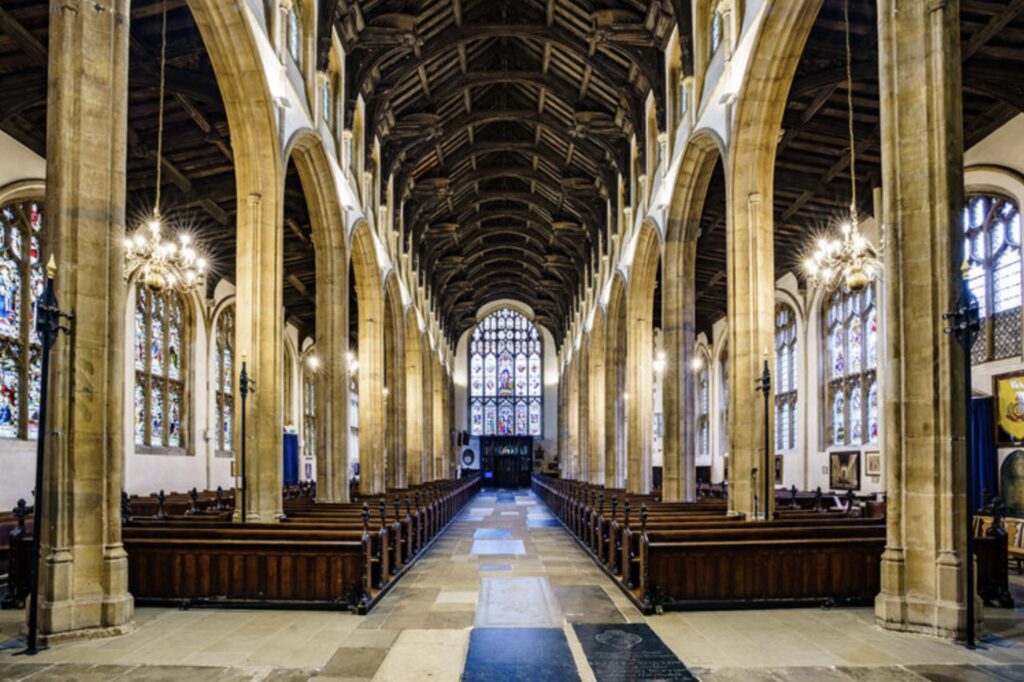
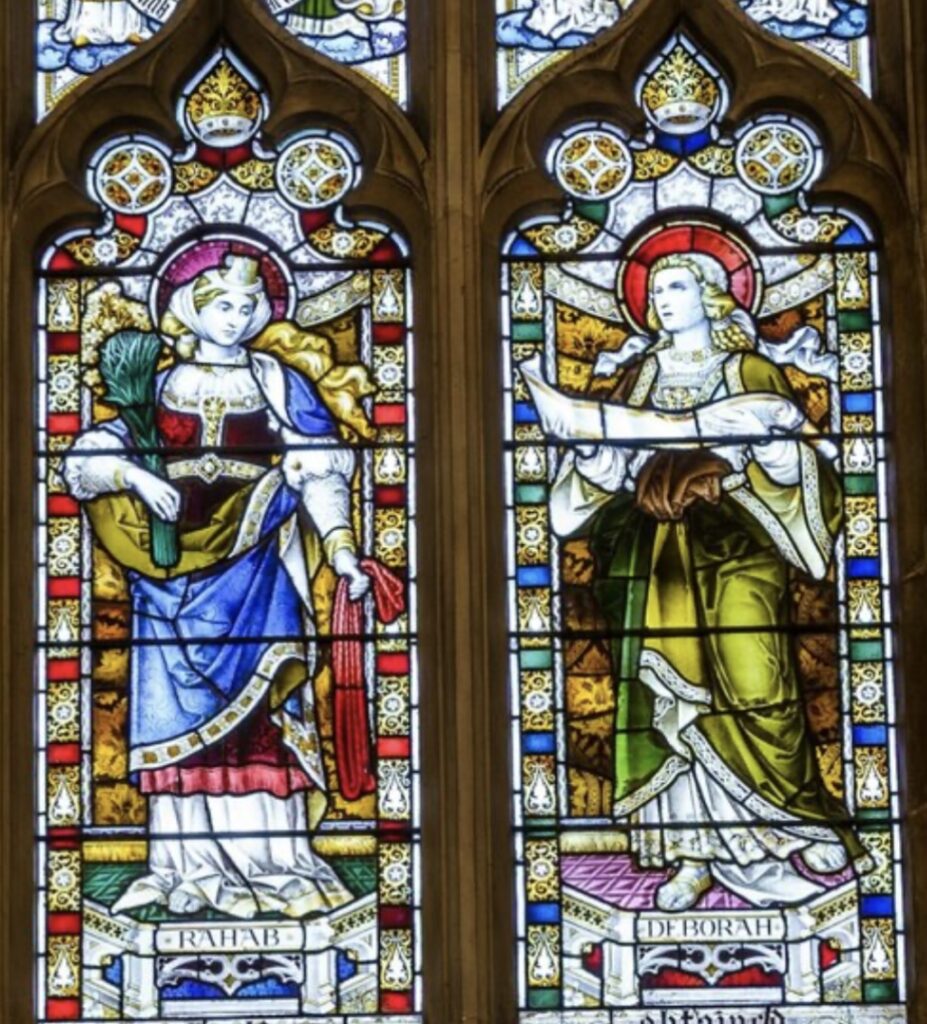
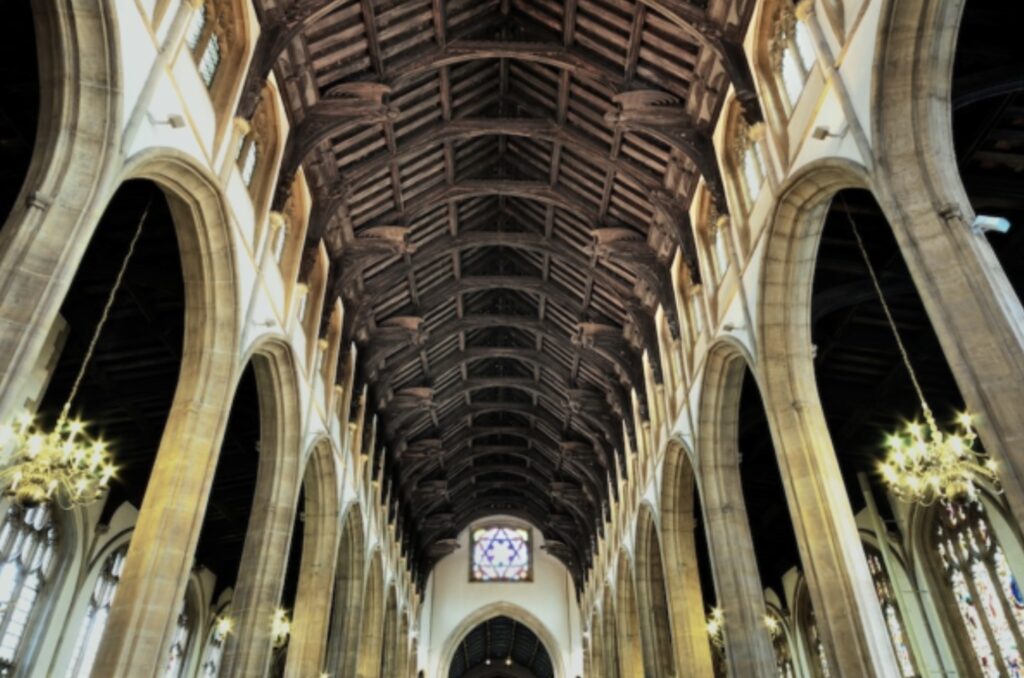
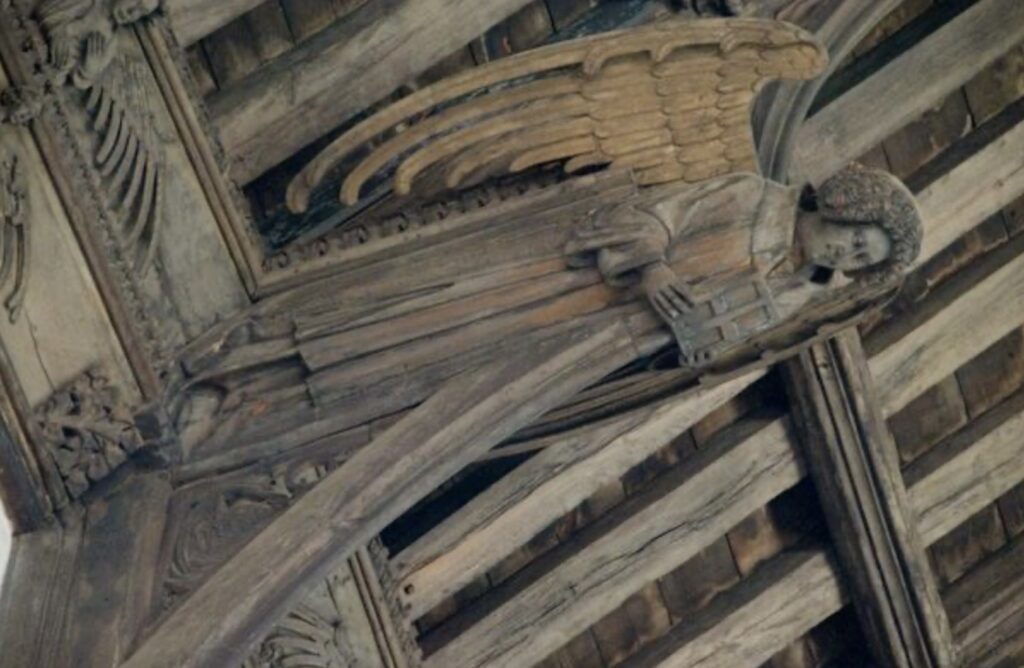
Here’s a suggested one-day itinerary for visiting Bury St Edmunds, incorporating local food specialties:
Morning
9:00 AM – Abbey Gardens and Ruins
Start your day with a peaceful stroll through the beautiful Abbey Gardens. Explore the ruins of the historic Bury St Edmunds Abbey and enjoy the vibrant floral displays.
10:30 AM – St Edmundsbury Cathedral
Walk over to St Edmundsbury Cathedral, just adjacent to the Abbey Gardens. Take a guided tour to learn about its history and admire the stunning architecture and the recently added millennium tower.
11:30 AM – Moyse’s Hall Museum
Head to Moyse’s Hall Museum to delve into the local history, from medieval times to modern day. The museum’s diverse exhibits provide a fascinating glimpse into the town’s past.
Lunch
12:30 PM – Lunch at The Angel Hotel
Enjoy a leisurely lunch at The Angel Hotel, a historic coaching inn. Try local specialties such as Suffolk ham, Suffolk Gold cheese, or dishes featuring local produce. Their afternoon tea is also highly recommended if you prefer a lighter option.
Afternoon
2:00 PM – St Mary’s Church
Visit St Mary’s Church to see its impressive interior, including the famous angel roof. Take time to appreciate the intricate woodwork and the church’s rich history.
3:00 PM – Greene King Brewery Tour
Head to Greene King Brewery for a tour. Learn about the brewing process and the history of the brewery, which has been producing beer since the 18th century. The tour usually ends with a tasting session of their locally brewed ales.
4:30 PM – Shopping on Abbeygate Street
Spend some time exploring the shops and boutiques on Abbeygate Street. Look for local products and souvenirs, including Suffolk-made items.
Evening
6:00 PM – Dinner at Pea Porridge
For dinner, dine at Pea Porridge, a renowned restaurant in Bury St Edmunds known for its focus on locally sourced and seasonal ingredients. The menu often features Suffolk lamb, local game, and fresh seafood from the nearby coast.
8:00 PM – Theatre Royal
End your day with a performance at the Theatre Royal, one of the oldest working theaters in the UK. Check the schedule in advance to see what’s on during your visit.
Additional Tips
- Local Delicacies: Look for opportunities to sample local delicacies such as Suffolk sausages, Aspall Cyder, and desserts made with locally grown fruits.
- Transportation: Bury St Edmunds is walkable, but you may want to use a taxi or local bus service for convenience, especially if you’re carrying shopping bags or need a break from walking.
This itinerary provides a mix of history, culture, and culinary experiences, offering a well-rounded day in Bury St Edmunds.
